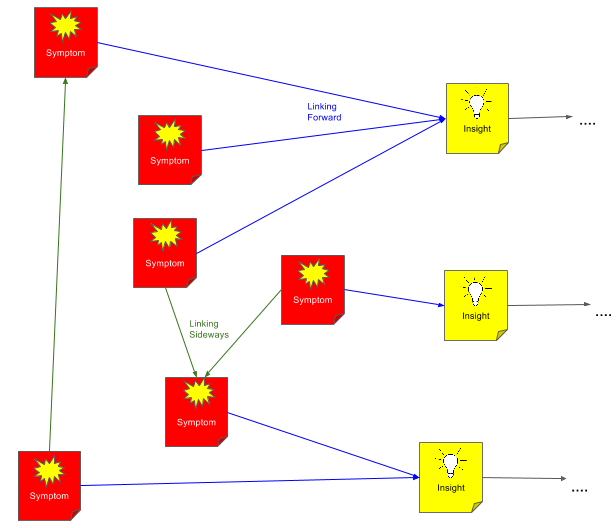When I started blogging for marketing purposes (to drive traffic and leads to my employer) almost 10 years ago, not many others were doing it.
Today, things look very different. According to the Content Marketing Institute, B2B marketers today allocate 28% of their budget to content marketing. And blogging is a very important component of content marketing. The most successful marketers, according to the same report, allocate over 42% of their budget for this purpose, and 76% say that this budget will increase in the coming years.
With such an abundance of content on the internet, surely it must be very difficult to use your blog today to drive visits and leads?
No, not at all. My feeling is that it is neither harder nor easier. The fundamental principles still apply, and if you follow them, you will get traffic - just as it has always been. For one thing, many more people today search the internet when they have a problem they want to solve. But perhaps more importantly, almost all business blogs get it wrong. And it benefits you to know how to do it right.
The purpose of blogging - to get traffic and leads
Why do you blog?
If you look at almost any business blog, you will notice that almost no one seems to know why they are blogging at all. You can tell by the irregular blogging strategy and the unfocused content that doesn't really say anything of importance.
A business blog has two fundamental goals:
Objective 1: Drive new visits and leads
Goal2: Convert existing relationships into business
To meet these goals, you need to know who you want to attract. Then you need to know why your particular blog post is likely to spark their interest, and what you need to write to take them from there to wanting a business relationship with your brand.
But today, almost all business blogs fail to do just that.
Why almost all business blogs fail to drive traffic and leads
Very few business blogs follow the above formula. Instead, most people blog either for convenience (e.g. blogging is an easy way to get news about yourself and your products in an unstructured way), or "because you have to".
In both cases, you are making the same fundamental mistake: you are not blogging for your target audience, but for yourself. The purpose of each blog post will not be to solve someone's problem, but to write for its own sake.
And in both cases, you fail to drive visits and leads.
What does it take for your business blog to drive traffic and leads?
First, you need to know the answers to two questions:
- What are the symptoms experienced by people who would benefit from our solution?
- What do we know that these people don't know, that makes us see these symptoms in a completely different way from them?
The answers to these two questions are the foundation of your blog strategy. Because from the answers are born the two fundamental types of blog posts: those that drive traffic, and those that drive business relationships.
The two fundamental blog types that drive both traffic and business
We can refer to the two types as visit-driven, versus insight-driven blog posts. To succeed, you need both, and you need to use them together in a specific way:
Visit-driving blog posts - the ones that attract new visits
Your visitor-generating blog posts have only one purpose: to attract new potential customers by writing about symptoms they experience. This one answers question 1 above. Note that the symptoms you write about do not have to be directly related to your solutions. It's enough that the customers searching for it would most likely benefit from your solution.
Knowing the symptoms you want to write about, do a keyword research to find specific keywords you would use to solve these problems (I will cover this in another blog post). Understand the intention behind those keywords and write keyword-optimized blog posts that satisfy those intentions.
If you follow this formula regularly (1-2 times a week) for at least 3, but preferably 6+ months, you will get visits. Not only that, the number of visits will continue to increase for years after you stop writing.
But in order for these visitors to not just solve their immediate problem and leave, you need to jack these blog posts into your insight-driven blog posts, which we'll get to next.
Insightful blog posts - the ones that convert your visits into loyal followers
You know something that your customers don't know. The customer looks at their perceived symptom as an isolated problem that they want to solve. You see it in a completely different way: as a small side effect that comes from a much larger underlying cause. It's time to show the customer this perspective.
Separating your insights from the need to drive visits issmart marketing: It separates what you really need to say from the need to write about what customers are searching for. Instead, you drive traffic to your insight-driving blog posts by linking from visit-driving blog posts. This way, you can drive both lots of visits and deep insights, without having to compromise on either.
What do you do next with the visitors the blog drives?
Marketing, along with sales, is about driving customers through the buying journey. Through your visitor-driving and insight-driving blog posts, you have taken the first step in that journey.
You can now link both "sideways" and "forward" in your blog posts to let the customer choose the path that is most relevant to them.
Linking to the page means linking to other subject areas. This helps the customer to find even more relevant issues, which may not have come up in the search. And by linking "forward" you help the customer move forward in their mental buying journey. The whole picture then looks like this:

Once you've created blog posts that drive both visitors and insights, it's time to naturally bring them into an automated buying process. We'll get to how to do that in the next blog post.


